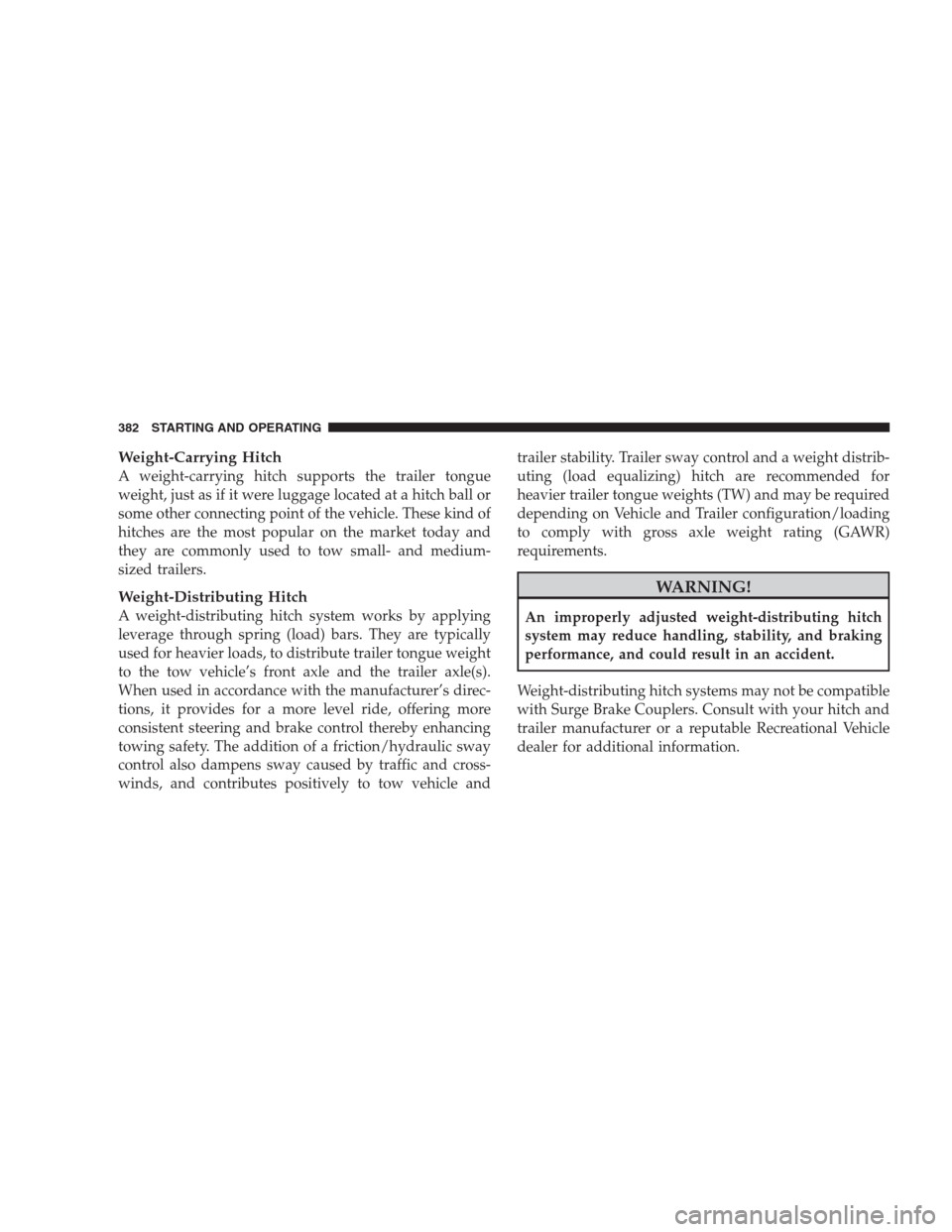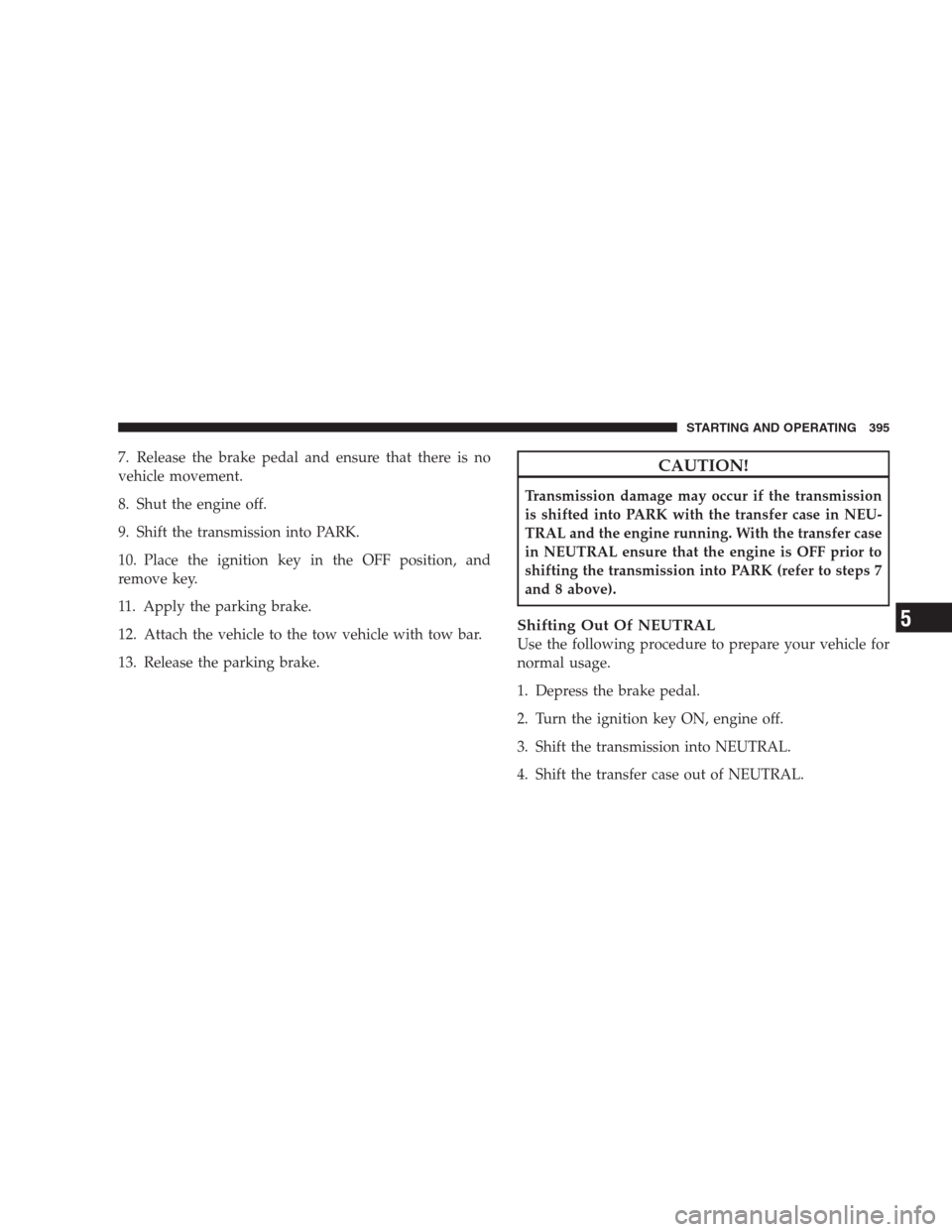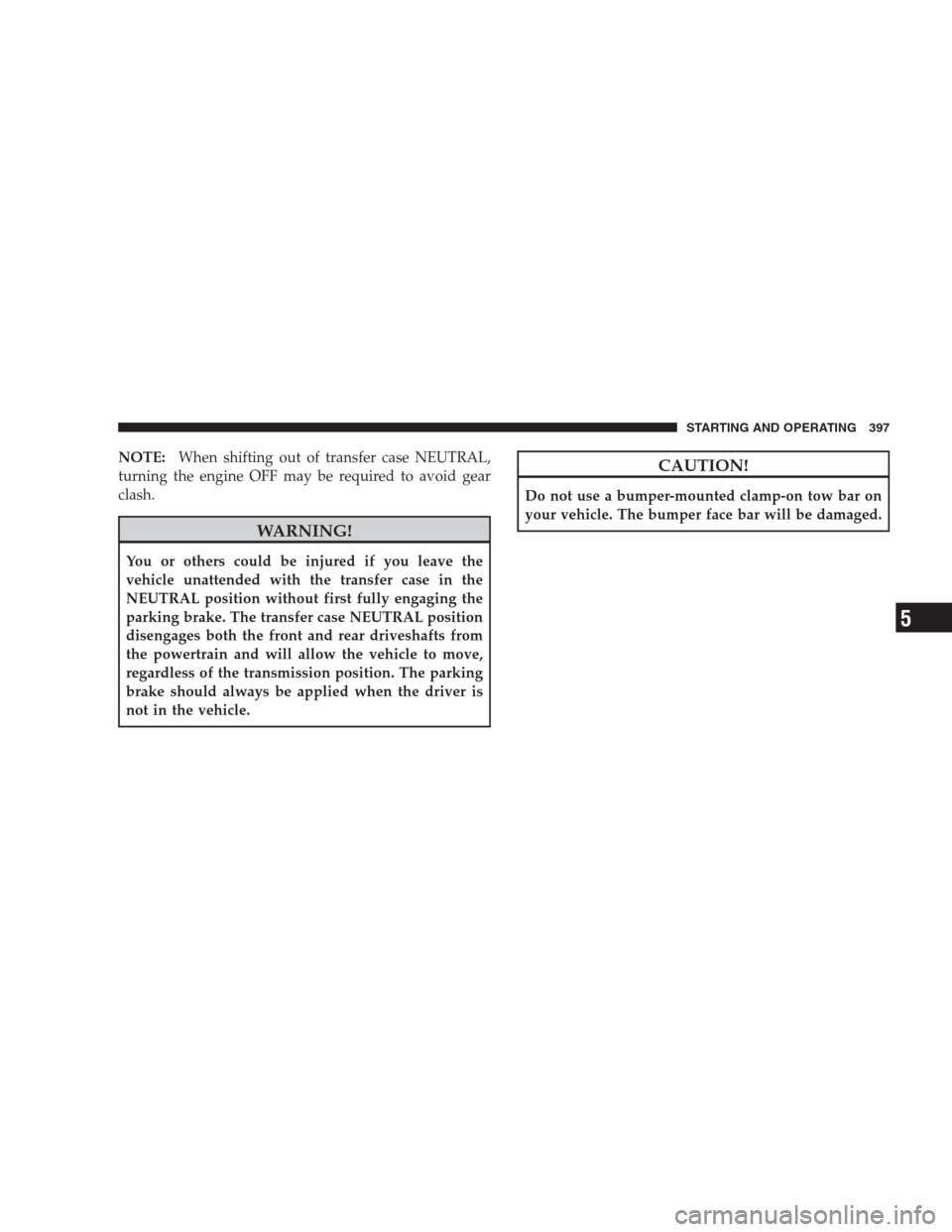tow bar JEEP COMMANDER 2009 1.G Owners Manual
[x] Cancel search | Manufacturer: JEEP, Model Year: 2009, Model line: COMMANDER, Model: JEEP COMMANDER 2009 1.GPages: 519, PDF Size: 9.78 MB
Page 384 of 519

Weight-Carrying Hitch
A weight-carrying hitch supports the trailer tongue
weight, just as if it were luggage located at a hitch ball or
some other connecting point of the vehicle. These kind of
hitches are the most popular on the market today and
they are commonly used to tow small- and medium-
sized trailers.
Weight-Distributing Hitch
A weight-distributing hitch system works by applying
leverage through spring (load) bars. They are typically
used for heavier loads, to distribute trailer tongue weight
to the tow vehicle’s front axle and the trailer axle(s).
When used in accordance with the manufacturer’s direc-
tions, it provides for a more level ride, offering more
consistent steering and brake control thereby enhancing
towing safety. The addition of a friction/hydraulic sway
control also dampens sway caused by traffic and cross-
winds, and contributes positively to tow vehicle andtrailer stability. Trailer sway control and a weight distrib-
uting (load equalizing) hitch are recommended for
heavier trailer tongue weights (TW) and may be required
depending on Vehicle and Trailer configuration/loading
to comply with gross axle weight rating (GAWR)
requirements.
WARNING!
An improperly adjusted weight-distributing hitch
system may reduce handling, stability, and braking
performance, and could result in an accident.
Weight-distributing hitch systems may not be compatible
with Surge Brake Couplers. Consult with your hitch and
trailer manufacturer or a reputable Recreational Vehicle
dealer for additional information.
382 STARTING AND OPERATING
Page 397 of 519

7. Release the brake pedal and ensure that there is no
vehicle movement.
8. Shut the engine off.
9. Shift the transmission into PARK.
10. Place the ignition key in the OFF position, and
remove key.
11. Apply the parking brake.
12. Attach the vehicle to the tow vehicle with tow bar.
13. Release the parking brake.CAUTION!
Transmission damage may occur if the transmission
is shifted into PARK with the transfer case in NEU-
TRAL and the engine running. With the transfer case
in NEUTRAL ensure that the engine is OFF prior to
shifting the transmission into PARK (refer to steps 7
and 8 above).
Shifting Out Of NEUTRAL
Use the following procedure to prepare your vehicle for
normal usage.
1. Depress the brake pedal.
2. Turn the ignition key ON, engine off.
3. Shift the transmission into NEUTRAL.
4. Shift the transfer case out of NEUTRAL.
STARTING AND OPERATING 395
5
Page 399 of 519

NOTE:When shifting out of transfer case NEUTRAL,
turning the engine OFF may be required to avoid gear
clash.
WARNING!
You or others could be injured if you leave the
vehicle unattended with the transfer case in the
NEUTRAL position without first fully engaging the
parking brake. The transfer case NEUTRAL position
disengages both the front and rear driveshafts from
the powertrain and will allow the vehicle to move,
regardless of the transmission position. The parking
brake should always be applied when the driver is
not in the vehicle.
CAUTION!
Do not use a bumper-mounted clamp-on tow bar on
your vehicle. The bumper face bar will be damaged.
STARTING AND OPERATING 397
5